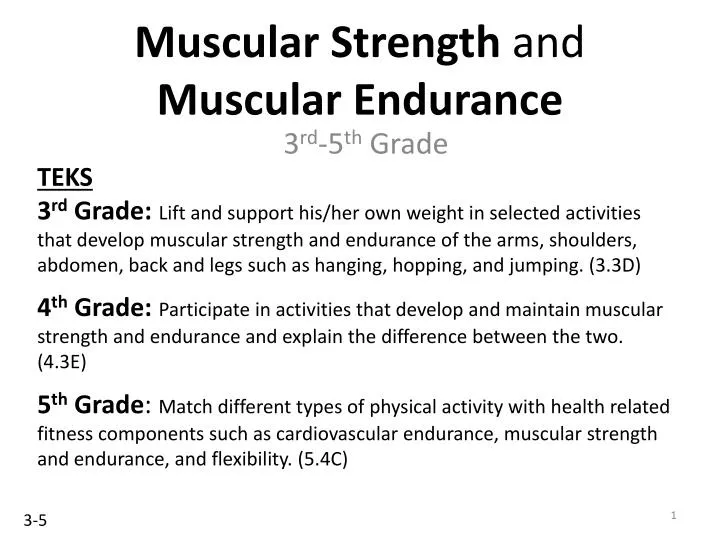


This may involve increasing the number of reps or increasing the amount of time a contraction is held. Muscular endurance is truly the combination of strength and endurance within a muscle. Improving muscular endurance involves increasing the total time a muscle is contracted. The main goal, regardless of the method, is to constantly challenge your muscles as you progress - either by striving to perform more reps or to hold a position longer. In fact, a 2014 study found maximum improvements in ab endurance when performing the plank 5 or more times per week ( 6). Load refers to the amount of weight or resistance you use (a 10-pound dumbbell or setting the leg press machine to 110 pounds, for instance). This will primarily work the abs and other core muscles. Helping your students get off the couch and develop a positive approach to fitness can contribute to their health and well-being for years to come The following activities will help your students understand the value of fitness and explore various methods for pursuing an active lifestyle. The National Academy of Sports Medicine recommends doing exercises such as squats, bench presses, cable rows, and lunges to help build your muscular endurance. The same idea can be performed with a plank, as described below. This works on the endurance of the hips and thighs. By nature, isometric contractions will train your muscles for endurance ( 6, 7).įor example, karate practitioners will squat in a horse stance (a squat position) for multiple minutes at a time. For example, if you use 155 pounds for 10 reps to failure, you might decrease to 110 pounds for a higher volume set.Īnother option is to increase the amount of time you hold a contraction. The caveat is that you will likely have to decrease the amount of weight you’re using. In practical terms, muscle strength refers to the capacity to lift, push or pull against weight. In technical terms, muscle strength describes the force generated when a muscle or group of muscles contracts. By encouraging body mechanics during every day activities such as walking and lifting objects. Greater muscular strength allows an individual to potentiate earlier and to a greater extent, but also decreases the risk of injury. Muscular strength and endurance help to protect you from injury in two key ways: By enabling you to maintain good posture. Just remember that you may need to adjust the load.įor example, if you normally bench press for 3 sets of 8–10 reps, then you may change to 2 sets of 25–30 reps. Every move you make requires muscle strength. Further research indicates that stronger athletes produce superior performances during sport specific tasks. Similarly, when you try to improve your muscular endurance, completing high-volume sets may be an effective training strategy. This can involve increasing the number of reps you perform of a specific exercise or for a specific muscle group ( 4, 5).Ī study that aimed to test and improve the muscular endurance of cross-country skiers suggested that an effective muscular endurance training session would include more than 20 reps, but less than 100 ( 4).

Improving muscular endurance involves increasing the total time a muscle is contracted during an exercise.


 0 kommentar(er)
0 kommentar(er)
